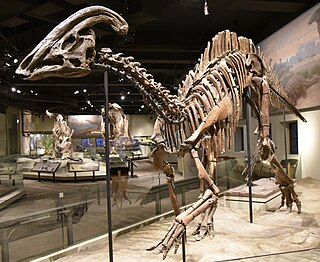
Parasaurolophus is a genus of hadrosaurid "duck-billed" dinosaur that lived in what is now western North America and possibly Asia during the Late Cretaceous period, about 76.5–73 million years ago. It was a herbivore that could move as both as a biped and as a quadruped. Three species are universally recognized: P. walkeri, P. tubicen, and the short-crested P. cyrtocristatus. Additionally, a fourth species, P. jiayinensis, has been proposed, although it is more commonly placed in the separate genus Charonosaurus. Remains are known from Alberta, New Mexico, and Utah, as well as possibly Heilongjiang if Charonosaurus is in fact part of the genus. The genus was first described in 1922 by William Parks from a skull and partial skeleton found in Alberta.
The Nymphomyiidae are a family of tiny (2 mm) slender, delicate flies (Diptera). Larvae are found among aquatic mosses in small, rapid streams in northern regions of the world, including northeastern North America, Japan, the Himalayas, and eastern Russia. Around a dozen extant species are known, with two fossil species found in amber, extending back to the Mid Cretaceous. Under an alternative classification, they are considered the only living representatives of a separate, suborder called Archidiptera which includes several Triassic fossil members. The family has characteristics associated with the Nematocera as well as the Brachycera. The antennae are shortened as in the Brachycera and these flies are long, having a snout with vestigeal mouthparts, non-differentiated abdominal segments with large cerci. The wings are narrow and hair-fringed and have very weak venation. They are known to form cloud-like swarms in summer and the short-lived non-feeding adults have wings that fracture at the base shortly after mating.

Lambeosaurinae is a group of crested hadrosaurid dinosaurs.

Parasaurolophini is a tribe of derived corythosaurian lambeosaurine hadrosaurids that are native to Asia, and North America. It is defined as everything closer to Parasaurolophus walkeri than to Lambeosaurus lambei. It currently contains Adelolophus, possibly Angulomastacator, Charonosaurus, Parasaurolophus and Tlatolophus.

Pluridens is an extinct genus of marine lizard belonging to the Mosasauridae. Pluridens is placed in the subfamily Halisaurinae with the genera Phosphorosaurus, Eonatator and Halisaurus. Compared to related halisaurines, Pluridens had longer jaws with more teeth, and smaller eyes. It also grew large size, measuring 5–6 m (16–20 ft) long and perhaps over 9 m (30 ft) in some individuals. The jaws in some specimens are robust, and sometimes show injuries suggestive of combat. The jaws may have been used for fighting over mates or territories.

The pygmy long-eared bat is a vesper bat, found in the north of the Australian continent. An insectivorous flying hunter, they are one of the tiniest mammals in Australia, weighing only a few grams and one or two inches long.

Liolaemus walkeri is a species of lizard in the family Liolaemidae. The species is endemic to South America.
Eocathayornis is a genus of enantiornithean birds that was probably more basal or "primitive" than related genera Sinornis and Cathayornis. These birds lived during the Early Cretaceous in today's People's Republic of China.
Explorornis is a genus of Mesozoic birds which lived during the mid-late Turonian stage, around 90 million years ago, in the Bissekty Formation of the Kyzyl Kum, in present-day Uzbekistan.

Bossiaea walkeri, commonly known as cactus bossiaea, cactus pea, or Walker's stick bush, is a species of flowering plant in the pea family (Fabaceae) and is endemic to southern mainland Australia. It is a rigid, much-branched shrub with flattened, winged cladodes and red, pea-like flowers between July and November in the species' native range.
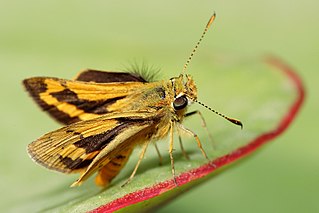
Ocybadistes walkeri, the greenish grass-dart, green grass-dart, southern dart or yellow-banded dart, is a type of butterfly known as a skipper found in eastern and southern Australia, with one subspecies found in the Northern Territory.

Epioblasma walkeri, common name the tan riffleshell, is a species of freshwater mussel, an aquatic bivalve mollusk in the family Unionidae, the river mussels.

Contradusta walkeri is a species of sea snail, a cowry, a marine gastropod mollusk in the family Cypraeidae, the cowries.
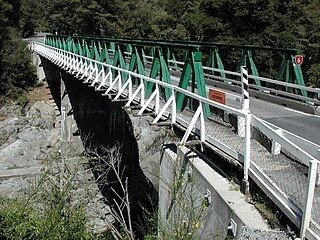
Pelorus Bridge is a tiny locality in Marlborough, New Zealand where the Rai River meets Pelorus River. State Highway 6 crosses the Pelorus River at Pelorus Bridge Scenic Reserve, which was used as one of the film locations for The Hobbit: The Desolation of Smaug. You can take a guided kayak tour to experience this Hobbit filming location.

Parmenini is a tribe of longhorn beetles of the subfamily Lamiinae.
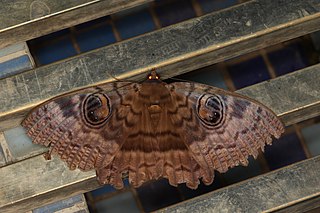
Erebus walkeri is a moth of the family Erebidae. It is found in Angola, the Comoros, the Democratic Republic of Congo, Ghana, Kenya, La Réunion, Madagascar, Malawi, Mauritius, Mozambique, Nigeria, Rwanda, the Seychelles, South Africa (KwaZulu-Natal), São Tomé & Principe, Tanzania, Gambia, Uganda, Zambia and Zimbabwe.
Dorcadida bilocularis is a species of beetle in the family Cerambycidae. It was described by White in 1846. It is known from Australia.
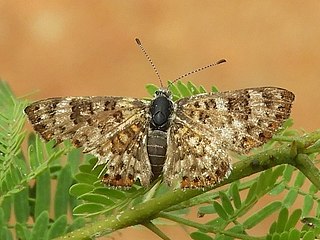
Apodemia walkeri, commonly known as Walker's metalmark, is a species of butterfly in the family Riodinidae (metalmarks), in the superfamily Papilionoidea. The species was described by Frederick DuCane Godman and Osbert Salvin in 1886. It is found from north-western Costa Rica north through Mexico. It is an occasional visitor to the lower Rio Grande Valley in southern Texas. The habitat consists of subtropical scrubs and forests.
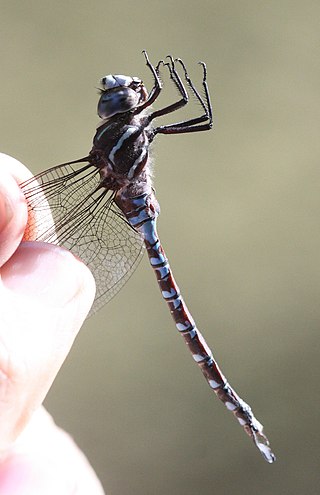
Aeshna walkeri, or Walker's darner, is a species of darner in the dragonfly family Aeshnidae. It is found in Central America and North America.

Plesioelasmosaurus is an extinct genus of elasmosaurid plesiosaur from the Late Cretaceous Greenhorn Limestone of Kansas, United States. The genus contains a single species, P. walkeri, known from a partial skeleton.














